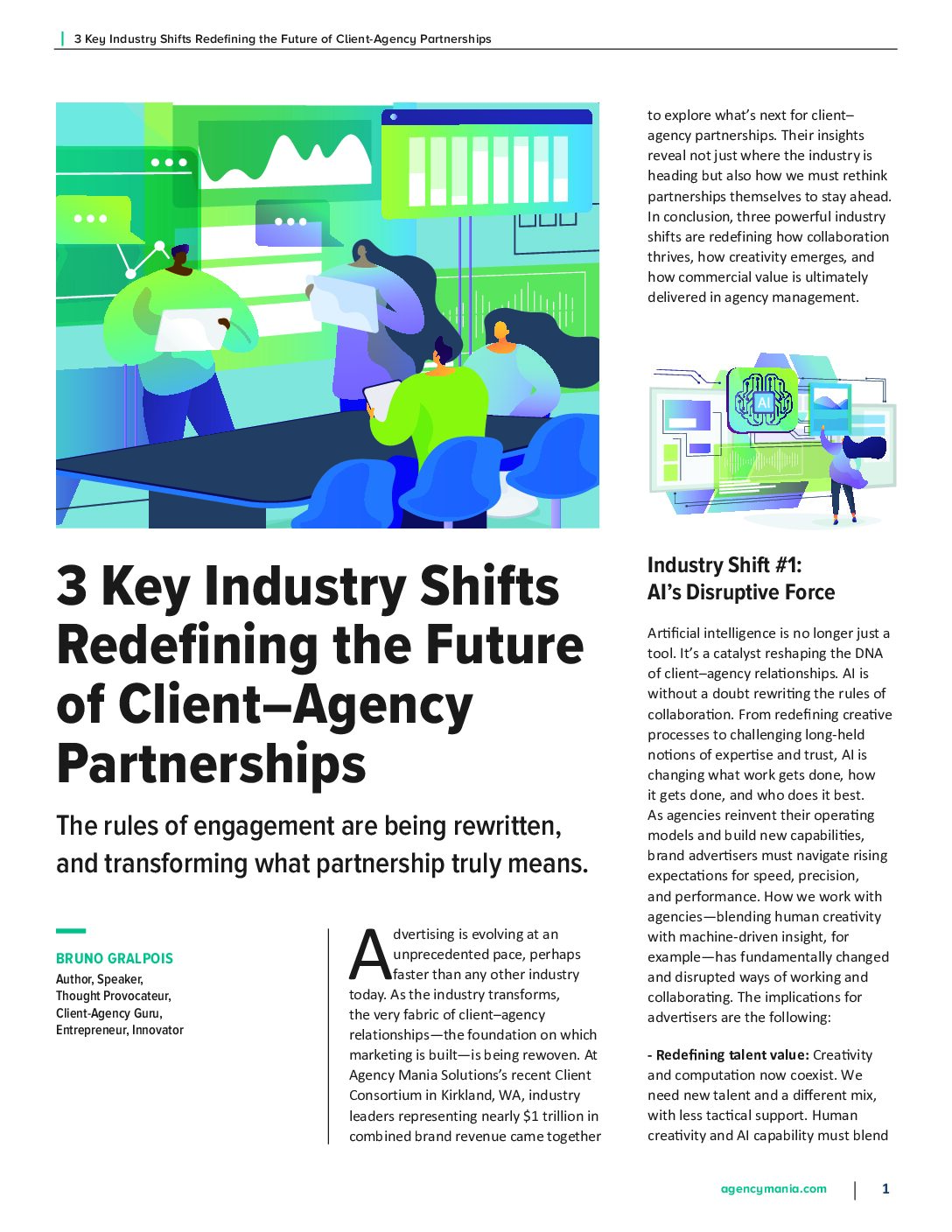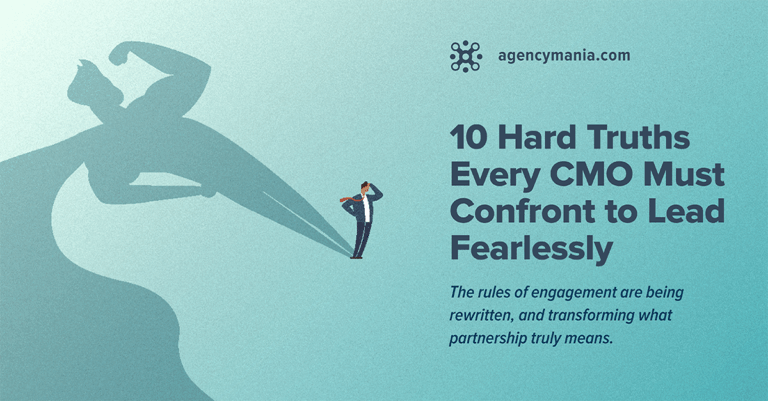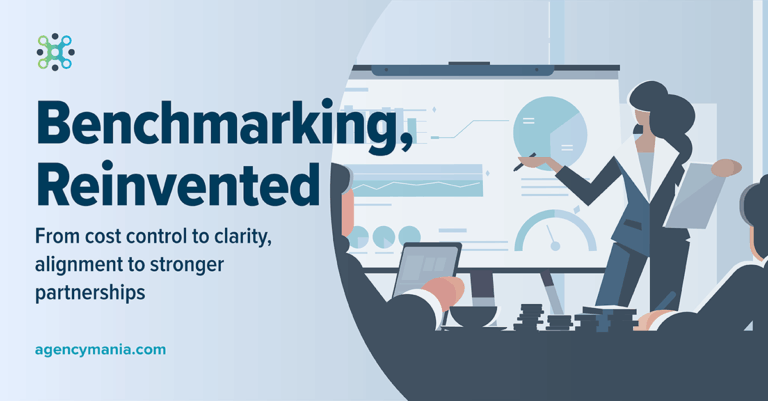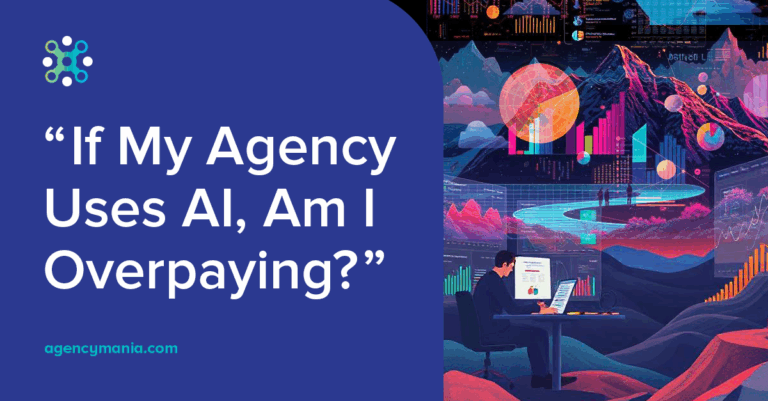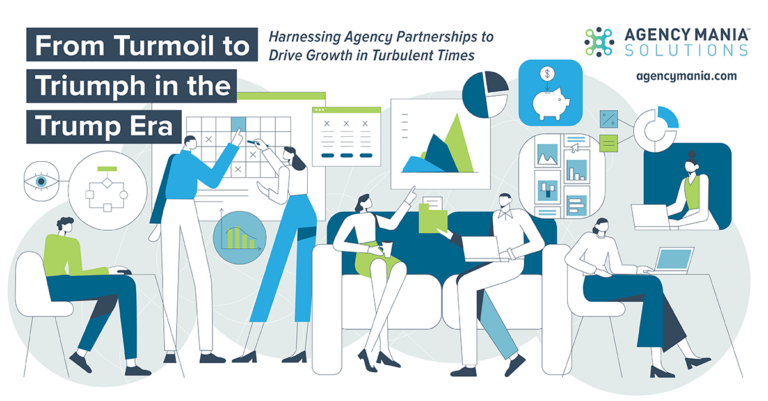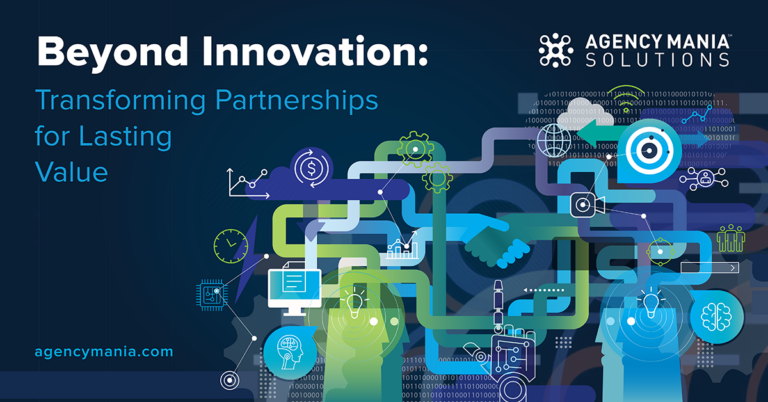The rules of engagement are being rewritten, and transforming what partnership truly means.
Advertising is evolving at an unprecedented pace, perhaps faster than any other industry today. As the industry transforms, the very fabric of client–agency relationships—the foundation on which marketing is built—is being rewoven. At Agency Mania Solutions’ recent Client Consortium in Kirkland, WA, industry leaders representing nearly $1 trillion in combined brand revenue came together to explore what’s next for client–agency partnerships. Their insights reveal not just where the industry is heading but also how we must rethink partnerships themselves to stay ahead. In conclusion, three powerful industry shifts are redefining how collaboration thrives, how creativity emerges, and how commercial value is ultimately delivered in agency management.
Industry Shift #1: AI’s Disruptive Force
Artificial intelligence is no longer just a tool. It’s a catalyst reshaping the DNA of client–agency relationships. AI is without a doubt rewriting the rules of collaboration. From redefining creative processes to challenging long-held notions of expertise and trust, AI is changing what work gets done, how it gets done, and who does it best. As agencies reinvent their operating models and build new capabilities, brand advertisers must navigate rising expectations for speed, precision, and performance. How we work with agencies—blending human creativity with machine-driven insight, for example—has fundamentally changed and disrupted ways of working and collaborating. The implications for advertisers are the following:
- Redefining talent value: Creativity and computation now coexist. We need new talent and a different mix, with less tactical support. Human creativity and AI capability must blend effectively, which requires new hybrid roles and learning investment to elevate strategic output. In this world, strategists, data scientists, and creatives collaborate seamlessly.
- Reengineering work and deliverables: AI is changing every aspect of the end-to-end advertising process, from how teams brief, conduct research, and collaborate, to how work is produced and analyzed. AI is flattening hierarchies, collapsing timelines, and exposing inefficiencies.
- Driving co-innovation: Should we build more together? Agencies become AI transformation partners, not just service providers, by collaborating on data pipelines, automation workflows, and predictive creativity. Agencies sometimes even co-own intellectual property. Brands may secure and license their own platform (such as Cognitiv and Adobe Firefly), leverage those of key agency players (e.g., Publicis’s CoreAI, WPP’s Open and Open Pro, Stagwell’s The Marketing Cloud, and Omnicom’s Omni and ArtBotAI), and even co-innovate by sharing intellectual property or resources to reach new heights. Partnership takes on a new meaning.
Industry Shift #2: Performance-Linked Compensation
The era of paying for effort or time spent is fading. As brand advertisers demand greater accountability and measurable ROI, performance-linked compensation is reshaping the economic foundation of the client–agency relationship. Agencies are being rewarded for results that drive true business impact. Time is no longer the currency it was once. As brand advertisers demand clearer accountability and measurable ROI, linking compensation to performance is finally altering the economic foundation of the client–agency relationship. Rewarding agencies for measurable impact ties their output (creative, media, or any other discipline) directly to business performance. The implications are the following:
- Aligning incentives to outcomes: Agencies must be motivated to pursue what truly matters to the business. Compensation now ties directly to business goals, from brand growth and sales lift to cost efficiencies. Compensation frameworks shift from hours and deliverables to results. This forces brands to define metrics with surgical clarity, ultimately creating stronger synergy between client and agency objectives.
- Embedding mutual goals: When agencies have skin in the game, collaboration shifts from transactional to transformational because agencies and clients finally share both the risk and the reward. Agencies gain stronger incentives to drive sales, brand lift, or customer engagement through alignment of strong creative execution with bottom-line outcomes. Both parties are accountable because they need each other.
- Elevating data and KPI discipline: Success depends on transparency. Data sharing becomes critical. Performance-based models require robust measurement frameworks, integrated systems, and real-time KPI tracking to turn every investment into actionable intelligence. Key performance indicators—qualitative or quantitative—are tracked, reviewed and used to drive decisions and stir the partnership.
Industry Shift #3: Holistic Partnership Intelligence
Fragmented data and oversight have long undermined decision-making for marketing and procurement leaders. The old questions “Did this agency perform?” and “Was it on time and on budget?” no longer suffice. Success now depends on visibility across every stage of the process, from briefing to creative delivery, from media activation to performance analytics. Brand advertisers need unified visibility into all agency activities, as well as output and core metrics, to see their agency’s holistic performance and bottom-line contribution to the company’s business. Holistic partnership intelligence connects every dimension of agency contribution—creative, media, production, strategy, and operations—into a single, integrated view of value creation. The implications are the following:
- Evolving from agency management to ecosystem orchestration: With rosters spanning multiple disciplines and geographies, brands must evaluate the performance of individual agencies as well as the collective whole. Effective collaboration is about managing a roster portfolio and measuring the sum of the parts. All roster agencies must be measured objectively, with common metrics to foster alignment and cross-agency partnership. At the same time, there are also agency-specific metrics based on discipline and areas of focus (e.g., geographic, divisional). Common metrics drive unity; discipline-specific KPIs drive depth.
- Decoding causality for shared accountability: Every partnership is a living system, strengthened or strained by behaviors on both sides. Success and struggle rarely occur in isolation; they are co-created. When clients and agencies truly examine cause and effect, accountability becomes shared. For instance, when a client shortens strategic timelines, it may unintentionally trigger re-briefs, excessive creative reviews, and ultimately weaker execution. Recognizing such causal links is what transforms blame into collaboration—and collaboration into progress.
- Building frictionless collaboration: Operational excellence means nothing stands in the way of ideas or execution. Integrated systems—of connected scopes, budgets, POs, agency fees, production spend, KPI scorecards, and performance assessments—help eliminate waste, human errors, delays, and compliance risk. The path to a seamless, data-driven partnership is more clear.
Working, and Winning, as One
As brand–agency dynamics evolve, so, too, does our definition of collaboration, trust, and shared success. Vendor relationships alone offer little organizational value. When brands and agencies reinvent how they work together, the business partnership itself becomes a growth accelerator. The three shifts we have explored here—AI redefining collaboration, compensation tied to performance, and intelligence unifying partnerships—are rewriting how creativity, efficiency, and value come to life. The future is more than about working together better; it’s about redefining what working together means. The strongest partnerships will resemble joint ventures, where both sides win only when value is created. This is not a new idea, but today, we finally have the road map to make it real.
Author, Speaker, Thought Provocateur, Client-Agency Guru, Entrepreneur, Innovator

